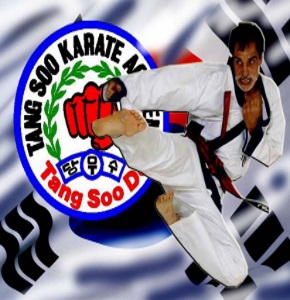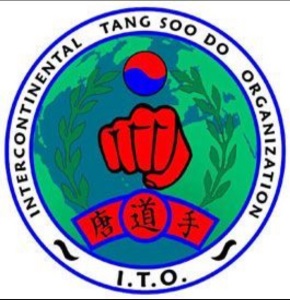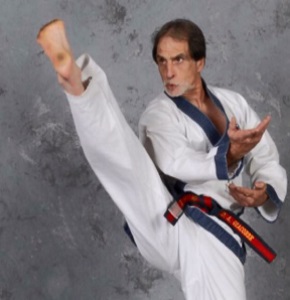INTERNATIONAL TANG SOO DO TOURNAMENT 2024
Tournament Rules
Each Ring shall consist of one Head Referee, four side Judges and a Scorekeeper/Timekeeper. However, the ring can be managed and controlled with a Head Referee and three Judges with the same scoring controls in place for Forms/Hyung and Breaking/Kyuk Pa. Sparring rings can then be managed and controlled by just the Head Referee and two judges if need be, but ideally back to five officials in total. Our goal is to work together with great teamwork and provide a fun, fair & successful day for everyone. The Head Referee should be the senior ranking instructor, and is responsible for overseeing the general operation of the ring. Any questions or conflicts should be directed to the Head Referee. The Head Referee should work closely with the Scorekeepers and Timekeepers to ensure proper administration of the rings which also includes double-checking final scores, placing's etc.
The four side Judges should watch and listen attentively to their ring. Follow the directions of the Head Referee and refer any questions directly to him/her. Sit at attention with confidence. Show good discipline and respect at all times. Remember, you are an example to the competitors. Do not leave your ring without permission. Scorekeepers and Timekeepers should follow the directions of the Head Referee. Fill out all paperwork completely and write neatly and clearly. Remember someone must later record the results. If you have any questions, please ask.
Forms & Weapons Ring Procedures
As the competitor divisions are call out, in some tournaments you may have a separate preparation area, others will not and therefore the category will be called directly to a ring number. The Head Referee lines the competing competitors up and the scorekeeper gathers the registration information. The scorekeeper should be sure to fill out all Ring and Division information on the score sheets. The ring is called to attention, with the officials lining up facing the competitors. The Head Referee bows the competitors in and directs them to sit at attention, until they are called to compete. The Head Referee needs to confirm with the Judges the minimum score level, which is normally set at 7.0. When the ring is ready to begin, the scorekeeper calls the name of the competitor up and the next competitor on deck. The competitor bows, enters the ring and prepares to compete. One competitor at a time will perform although this may increase to two (2)if we have a tie in the final stages to sort out the medal positions (due to health and safety, weapons may still be required to perform one at a time and therefore will need to be scored again). Competitors may perform Forms and Weapon Forms that are not familiar with, in this event you will be unable to determine if moves have been missed or performed incorrectly and therefore in this case you should judge the performance on its technical merit; that is power, balance, technique & effort. Any Form/Hyung is allowed for any grade as different Organisations have different syllabus and requirements and therefore it is unfair to limit which Form/Hyung they have to perform. Therefore Traditional, Yuk Ro and Chil Sung Forms/Hyung may be performed.
Forms / Hyung Guidelines
Before starting the competition, all competitors in the section will line up facing the judges, the Head Referee will then ask the students and judges to face the head table and bow to the head table, then the competitors en block will face the judges and bow to the judges, the judges and the competitors will then sit down and wait for the competition to start. To start the competition the competitors name will be called followed by the next competitor to compete who will be ready "on deck". This procedure will continue until the end of the competition. The competitor bows to enter the ring and then bows to the panel of judges once stood in the correct position. Competitors are not required to approach the officials to announce their name but when in the ready position announce the name of the form that they intend to perform. The judges will then give permission to begin; the competitor will then start when they are ready. Ideally the form should be announced in Korean but we understand that some children and junior grade competitors may not be able to do this, therefore announce in English is acceptable. The competitors will be judged by four (4) or five (5) judges. When the competitor has finished, the Head Referee will ask the competitor to turn around. Once the competitor is facing the opposite direction the Referee will call for score. Each Judge will then present their score simultaneously to the scorekeeper. The scorekeeper records the score for that competitor. Removing the highest and lowest scores if there are four (4) or five (5) judges, then adding the remaining three tabulates the score. The highest score of the group indicates the winner. In the case of a tie, the highest and lowest scores are added back in to break the tie. If the tie still remains, the competitors are asked to once again perform their form, this time side by side. When they are finished, they are asked to face the rear and the Head Referee calls for the decision. The Judges show their decision with the raising of their left or right hand. At the completion of the category, all competitors are lined up facing the Judges and Referee. The place winners are called forward and the prizes are distributed. All competitors are then called to attention, bow and are dismissed. If the venue has a podium present, one of the officials will take the medal winners to the podium for photographs, but this is not mandatory.
Weapons Guidelines
Before starting the competition, all competitors in the section will line up facing the judges, the Head Referee will then ask the students and judges to face the head table and bow to the head table, then the competitors en block will face the judges and bow to the judges, the judges and the competitors will then sit down and wait for the competition to start. To start the competition the competitors name will be called followed by the next competitor to compete who will be ready "on deck". This procedure will continue until the end of the competition. The competitor bows to enter the ring and then bows to the panel of judges once stood in the correct position. Competitors are not required to approach the officials to announce their name but when in the ready position announce the name of the form that they intend to perform. The judges will then give permission to begin; the competitor will then start when they are ready. Ideally the form should be announced in Korean but we understand that some children and junior grade competitors may not be able to do this, therefore announce in English is acceptable. The competitors will be judged by four (4) or five (5) judges. When the competitor has finished, the Head Referee will ask the competitor to turn around. Once the competitor is facing the opposite direction the Referee will call for score. Each Judge will then present their score simultaneously to the scorekeeper. The scorekeeper records the score for that competitor. Removing the highest and lowest scores if there are four (4) or five (5) judges, then adding the remaining three tabulates the score. The highest score of the group indicates the winner. In the case of a tie, the highest and lowest scores are added back in to break the tie. If the tie still remains, the competitors are asked to once again perform their form, this time side by side if deemed safe to do so by the Head Referee, if not then each competitor will demonstrate their weapon again, one at a time When they are finished, they are asked to face the rear and the Head Referee calls for the decision. The Judges show their decision with the raising of their left or right hand (unless they are called back up one at a time due to safety reasons then standard scoring procedures will need to be followed) At the completion of the category, all competitors are lined up facing the Judges and Referee. The place winners are called forward and the prizes are distributed. All competitors are then called to attention, bow and are dismissed. If the venue has a podium present, one of the officials will take the medal winners to the podium for photographs, but this is not mandatory.
Sparring
The ring is called to attention, with the three (3) or five (5)officials lining up facing the competitors. The competition is started by all the competitors being brought to attention by the Head Referee, the co-referee's and all the competitors will then face and bow to the head table (if applicable that day). The competitors then turn and face the referee's and bow to each other. When the ring is ready to begin, the scorekeeper calls the name of competitor's up. Both competitors enter from the side of the ring. Both competitors bow before entering the ring and then proceed to the centre of the ring as indicated by the referee. It is the Head Referee's full responsibility to ensure that the correct sparring protection & headgear is worn by all competitors; this is mandatory. The Head Referee extends his or her arms out with hands held at shoulder height. The hands should be held tight and strong with the palms facing outwards towards the competitors. The Head Referee simultaneously snaps the palms to face inward, indicating to the competitors to face each other. The Head Referee again simultaneously dropping the hands inward, palms facing the ground at chest height, indicating to the competitors to bow to each other. At this time the Head Referee raises the coloured tag in the right hand to indicate the person on the right, and places the coloured tag around the back of the competitor's belt. Moving back to attention the Head Referee calls "Ready" The Referee then steps between the competitors. Calling for "fighting stance" the Head Referee extends both arms outward, pushing the competitors back to their position.
Operating with Three (3) Officials
The Head Referee then slides back into fighting stance. A point is called by shouting loudly POINT!, the Head Referee then calls for verification, the two (2)centre referees and the outside referee (1) simultaneously raise their hands indicating how the point/ warning should be given, the Head Referee calls out the points voting so that everyone is aware what has been scored. Upon completing the point awarding, the Head Referee then steps between the competitors. Calling for "fighting stance" the Head Referee extends both arms outward, pushing the competitors back to their position. The Head Referee then slides back into fighting stance away from the competitors, indicating for the match to continue. Operating with Five (5) Officials The Head Referee then slides back into fighting stance. A point is called by shouting loudly POINT!, the Head Referee then calls for verification, the four (4)corner judges simultaneously raise their hands indicating how the point/ warning should be given, the Head Referee calls out the points voting so that everyone is aware what has been scored. Upon completing the point awarding, the Head Referee then steps between the competitors. Calling for "fighting stance" the Head Referee extends both arms outward, pushing the competitors back to their position. The Head Referee then slides back into fighting stance away from the competitors, indicating for the match to continue. The time runs for two minutes continuous. Upon time running out the Timekeepers calls "Time" loudly to stop the match. The Head Referee then steps in to stop the match and shouts "stop". The competitors return to attention. The Head Referee raises both hands, palms facing inward. The Head Referee simultaneously drops the hands inward, palms facing the ground at chest height, indicating to the competitors to bow to each other. The Head Referee then grasps the arm of each competitors raising the arm and calling the winner of the match. The competitor's then back out of the ring at the same point as they entered, exit and bow to the Head Referee and confirm their names to the scorer if they have won.
Matches
Each match will last two minutes. In the case of a tie, the competitors will continue "sudden death", until the first point is scored. The time will not stop unless indicated by the Head Referee to do so e.g. in the case of an injury. The time does not stop for point verification. With all verified techniques scoring ONE POINT, if a competitor reaches five (5) points clear, the Head Referee must end the fight.
Calling Points
In scoring points, the Head Referee and each co-referee (operating a three (3) officials system) will have one equal point. The Head Referee and the other inside referee carryout all the scoring, if no majority then the voting of the outside referee is taken into consideration. To call a point either of the inside referees call "Point," the outside referee is NOT allowed to call point, the inside referees take full responsibility for the calling of the points. Awarding a point -raise the right or left arm high into the air of pointing towards the floor if you feel an illegal technique or behaviour has been demonstrated. Operating a five (5) officials system - all 4 judges plus the Head Referee can call "Point" at any time, then the Head Referee will stop the fight whilst
- No Point -Lower both arms crossed towards the ground.
- Did not see -Raise both hands crossed in front of the eyes. Indicates No vote and has no effect on the totalling of the votes. NB. A No see vote is not taken into account when deciding majority basis
- Points are awarded on a majority basis
- A warning can constitute a point, to call a warning the referees call "Point" in order to stop the match.
- Upon calling for verification the judges points down and outward calling warning.
- Warnings require a majority rule or discussion between the officials to agree the outcome
- Dissent or bad respect can lead to immediate disqualification and immediate exit from the entire tournament.
- All valid techniques will score ONE (1) POINT ONLY.
Legal Scoring Techniques:
Any Kick to the following Legal Target areas:
- Head: side and front of head but not top or back of head
- Body: side and front of body but not back (must be above the belt)
A Reverse Punch to the following Legal Target areas:
- Body: side and front of body but not back (must be above the belt)
Illegal Target Areas and therefore Warning offences:Any Attack to the following areas:
- Any area below the belt
- Back of Body
- Back or top of Head
- Head: open face area only (no punch will be allowed to side, back and top of the head)
Invalid Techniques that will result in a Warning:
- Elbow Strike
- Knife Hand
- Back Fist
- Ridge Hand
- Spear Hand
- Grabbing/Holding
- Spinning Hand Techniques
- Punch to the front, side, back or top of the head or neck
- Any technique to the back or top of head, also the back area
- Below the belt techniques
- Sweeping / Takedown Techniques
- Persistent turning your back
- Running out of the ring
A second warning will result in one point being deducted from the fighter who is receiving the warning. Any additional warnings will result in further single points being deducted or pending the severity could result in disqualification.
Protective Material:
Mandatory
- Soft foam hand and foot protection - to be supplied by the competitor
- Head guard - should be supplied by the competitor
Strongly advised but not Mandatory
- Mouth Guards
- Groin Protection
- Shin protection
Notes for Scorekeeper, Timekeepers:
- Please pay close attention, the Referee needs your full attention. Write neatly and legibly.
- Keep track of awarded points during Free-Fighting.
- Ask the Referee to verify your scoring.
- If you are approached with a question or complaint, refer them to the Referee.
- Please do not be afraid to ask questions or for help!



